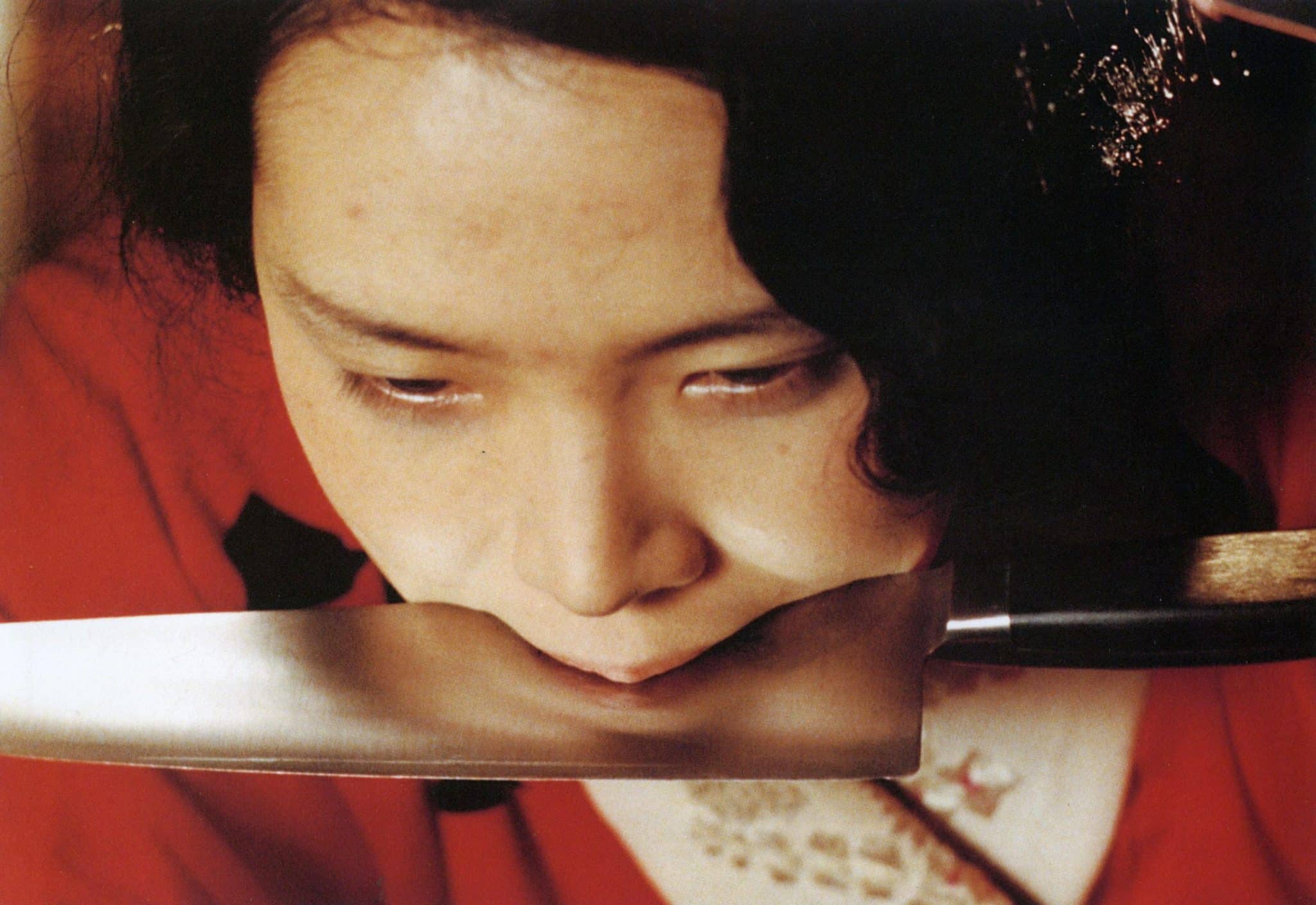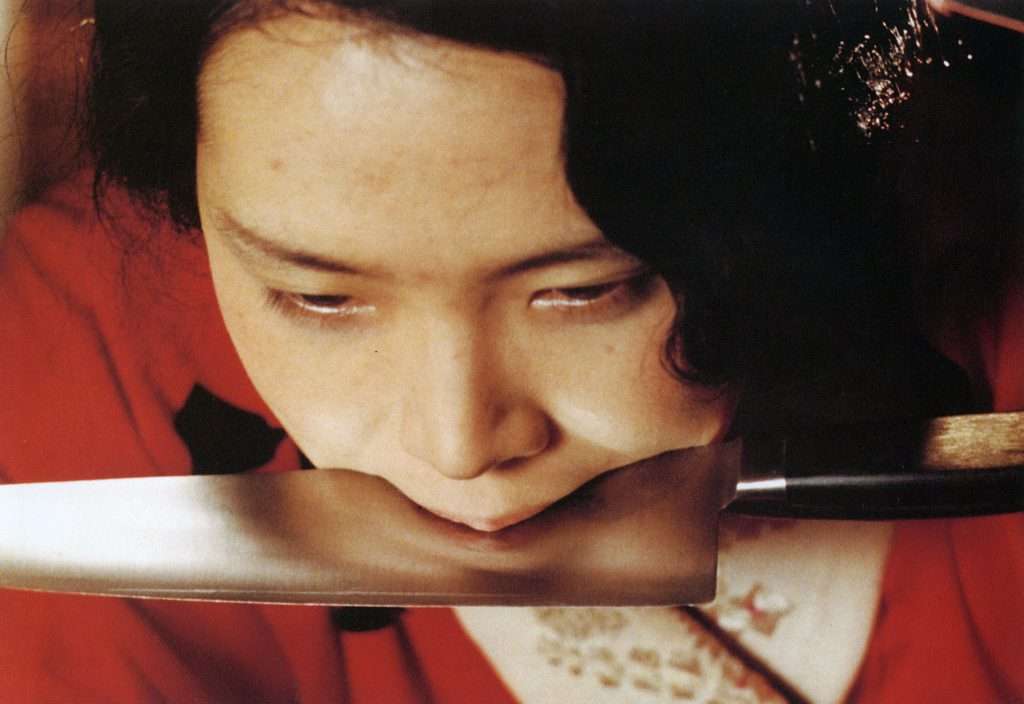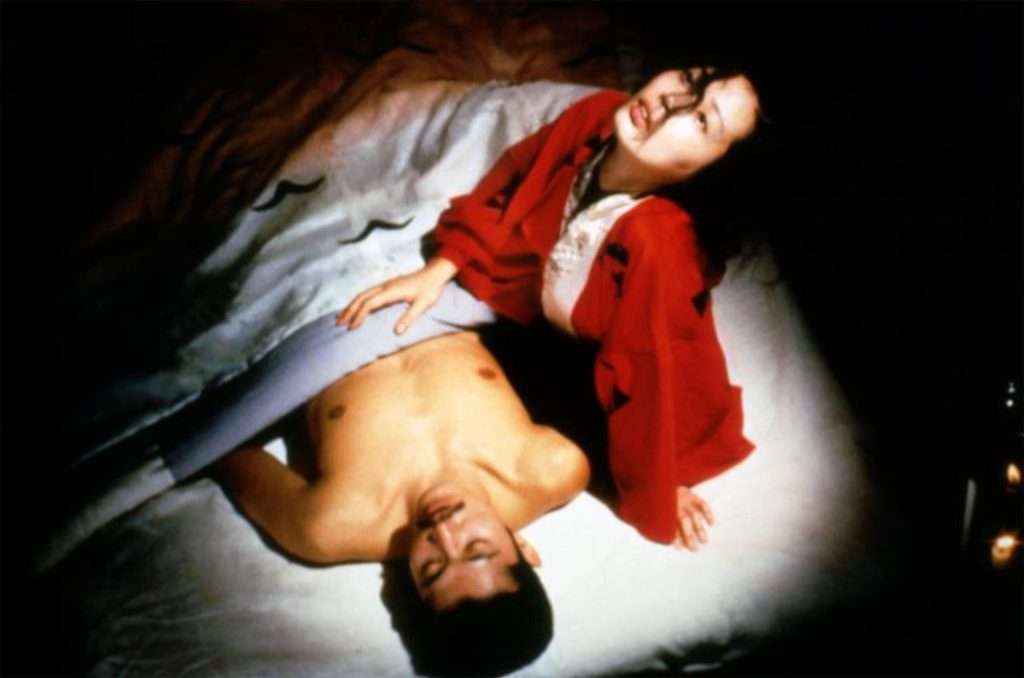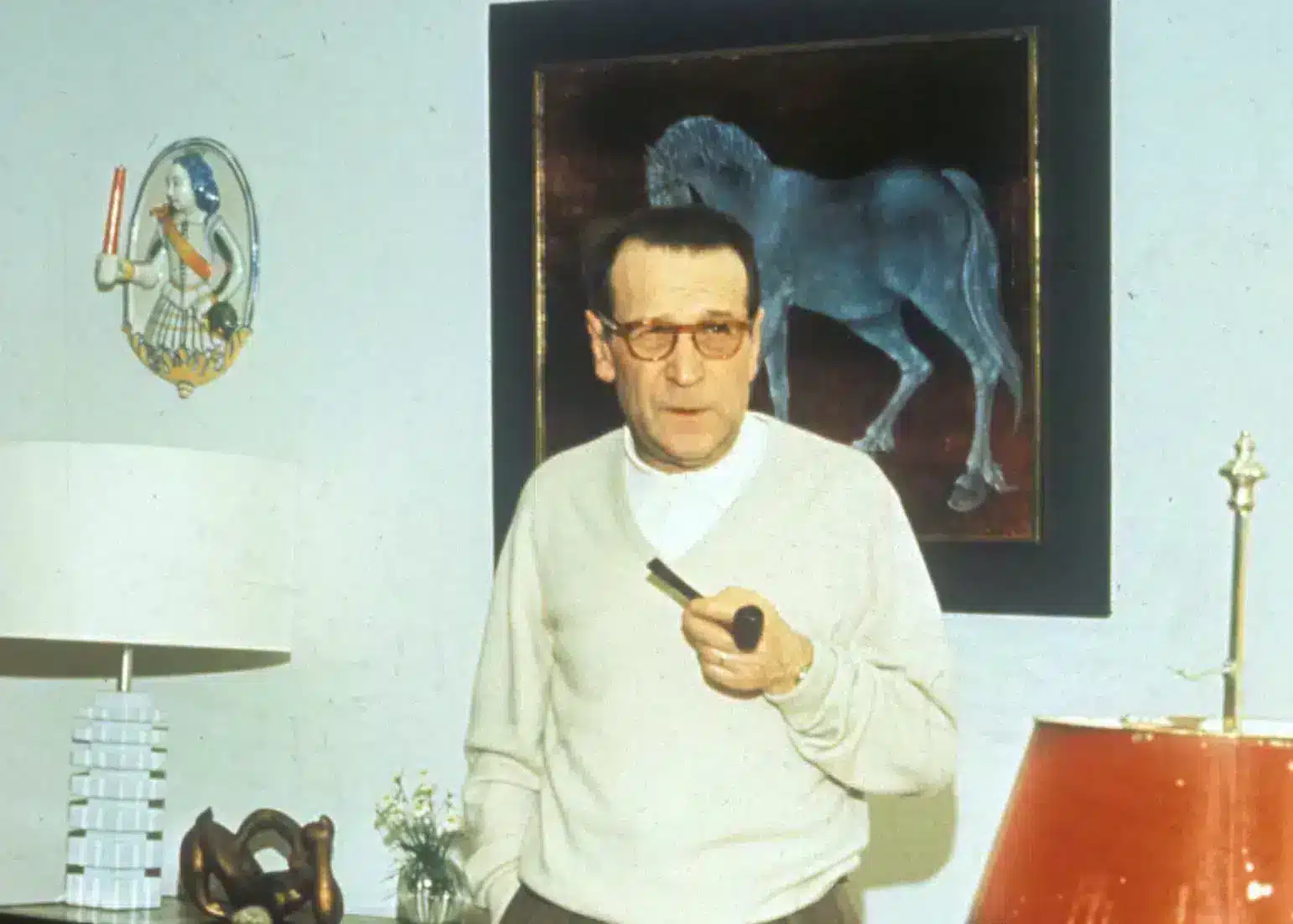
“You have to approach death to feel the height of ecstacy…”
By the time they had begun experimenting with asphyxiation, the relationship between Sada Abe and Kichizō Ishida had, in just six days, already evolved from a simple love affair into something more like a hurricane. Desire had turned into addiction, passion had morphed into obsession, and what was once a tryst between two people would soon become a scandal poised to set 1930s Shōwa-era Japan on fire. The turning point came when Abe, a small-time Geisha and sex worker, realised that if she squeezed her lover’s neck with just the right resolve, then his blood would rush from his face to his prick, intensifying both their orgasms as a result. At first, married businessman Ishida was as elated as Abe that they had unlocked a new mode of erotic ecstasy. Their experiments intensified, Abe leaving her hands around his neck a little longer each time, and each time his face turning a darker shade of purple (and, frankly, not quite returning to its original colour).
On the last night that they would enjoy together, as he drifted to sleep, Ishida muttered the words that may well have sealed his fate. Drowsily, he said, “You’ll put the cord around my neck and squeeze it again while I’m sleeping, won’t you? If you start to strangle me, don’t stop, because it’s so painful afterwards.” Hours later, he was discovered dead and alone with Sada’s obe [sash] wrapped tightly around his neck, his genitalia missing from his body, and, written in blood on his chest, the words: “Sada, Kitchi, together.”
Simultaneously shrouded in enigma and utterly sensationalised, the murder of Kichizō Ishida by his lover Sada Abe took Japan by storm, triggering a frenzy that would quickly be referred to as “Sada Abe panic” by the Japanese media. As the hunt for the murderess became more frantic, reports from the public flooded in; an alleged Abe sighting in Tokyo—then Okinawa—then Kobe, with one false claim inciting a stampede in the Ginza district of Tokyo. The case went on to inspire poems, biographies, a manga series, an unfinished novel by Mutsuo Toi (who incidentally went on to commit the deadliest single-shooter massacre in Japanese history, only two years after the Abe scandal—look it up at your own risk), various musical tribute bands, a truly masterful film adaptation by Nobuhiko Obayashi, and, the greatest of note: Nagisa Oshima’s In The Realm of The Senses.
Released in 1976, Oshima’s erotic adaptation of the Sada Abe murder instantly earned the type of infamy in Japan that the case itself became famous for, drawing the first of several strange parallels between reality and interpretation that make Senses the most enduring artistic endeavour to spring from the tragedy.
In The Realm of The Senses rang every alarm, confronting taboos of sex and censorship that the Japanese film industry weren’t ready to see prodded, let alone shattered. A raw work of erotica, the film retold Abe’s story using unsimulated sex, its two stars Eiko Matsuda and Tatsuya Fuji engaging in everything from fellatio to penetration. Knowing Japan would never let such a film be made, Oshima went through adventurous French producer Anatole Dauman to make the film, officially making Senses a French production and giving the director total creative freedom. Suffice to say, he left no fetish unrealised: public sex, voyeurism, lesbians, foodplay, orgy, domination—all unfiltered in glorious technicolor.
Yet there’s a certain hot-bloodedness to In The Realm of The Senses that takes it from trashy pinku B-movie to erotic arthouse masterpiece. Often cited as one of the greatest classical Japanese filmmakers alongside Akira Kurosawa and Yasujiro Ozu, Oshima was an auteur first and provocateur second, though his best work came when he would strike the perfect balance of the two. Always politically years ahead of his time, up until his final film Taboo (a movie about a brotherhood of samurai coming to the daunting realisation that sexuality is a spectrum), Oshima’s stance on In The Realm of The Senses was clear: fuck the censors. As far as he was concerned, pornography could be cinema too—it could be political, and it could be beautiful. “This was the first hard-core pornographic film [in Japan]” he said in a 1976 interview, a fact that the Japanese government wasn’t exactly jazzed about. Upon release, Senses was banned nationwide and Oshima was called to a court of law on charges of obscenity and disturbance of society. As headstrong as ever, he made a case validating his feature, claiming that by tackling obscenity head-on he rendered the word meaningless. He said, “nothing that is expressed is obscene; what is obscene is what is hidden. When we are free to see everything, both obscenity and taboo disappear.”

The film’s ban wasn’t totally lifted—it has yet to be shown completely uncensored in Japan to this very day—but Oshima’s point remains groundbreaking for its time. Unlike many pinku films of the era that weaponised their erotica (which he notably didn’t think highly of), In the Realm of the Senses uses its own vulgarity to drive the audience into the heart of the tempest. Take a quick glance at Senses and it’s easy to focus on the smut; Ishida eating a boiled egg out of Abe’s vagina; an elderly Geisha soiling herself after a particularly intense bout of lovemaking; an orgy in the Okiya; desire, at its most primitive, and for a few moments here and there you wonder if there’s really any point to the filth at all. Then, the words Ishida would speak just before his death creep back to mind:
“You’ll put the cord around my neck and squeeze it again while I’m sleeping, won’t you? If you start to strangle me, don’t stop, because it’s so painful afterwards.”
Sex alone doesn’t make a story, but probe the relationship between Sada and Ishida and the question suddenly becomes one of high-stakes and hard-boiled romance. Did Ishida truly intend for Sada to murder him? Did a love really exist that could be as twisted as it is boundless? Oshima wisely leaves the mystery open to interpretation, though Senses implies a truth that resides in a more emotionally complex middle ground.
His version of Ishida and Abe present a power dynamic that wasn’t so common in Japanese media at the time: a woman who desires sex and takes it whenever she pleases, and a man who is totally submissive, reduced to the literal sum of his parts. “My body is yours, do as you please with it”, he tells Abe, whose eyes glow with excitement in response. First taking agency over her own desire, she then takes agency over his, until he finally offers up his life to her in exchange for her total erotic satisfaction. It may be a perverted act of romance, but it’s an act of romance all the same: to allow yourself to love so transcendentally that you would gift your soul to someone in exchange for a moment of encompassing ecstasy together.
In an interview with Criterion for their Senses blu ray release, Tatsuya Fuji compares Ishida’s death at Abe’s hands to the fleeting existence of flowers. He says “upon reaching full bloom, they wanted to freeze their love and keep it in that state forever. Even further, there’s the beauty of the bloom, but there’s also the beauty of how flowers fall. In Japan’s aesthetic sense, dying occupies a very important place…human life is a fleeting dream, an illusion, therefore we must enjoy it to the fullest.” In the film and in the real murder case, Abe fulfils Ishida’s willful objectification by taking a sharp knife and claiming the most apt symbol of their love: not his heart, but his genitalia. She would later tell the police that “she wanted to take the part of him that brought back the most vivid memories.”
Abe would travel Japan for several days with Ishida’s genitals kept safely in the folds of her Kimono, the authorities eventually discovering her staying under an alias at an inn in Shinagawa where she had been practising necrophilia and penning farewell letters to Ishida. Despite planning to commit suicide by throwing herself and what remained of Ishida off of Osaka’s Mount Ikoma, she left the inn smiling from ear to ear. Her interrogation was equally contradictory; when asked why she killed him, she answered, eyes reportedly sparkling: “I loved him so much, I wanted him all to myself. But since we were not husband and wife, as long as he lived he could be embraced by other women. I knew that if I killed him no other woman could ever touch him again, so I killed him.”

There’s a cruel irony in Oshima’s film and the scandal it was based on. The real Sada Abe became a sensation, against all odds a symbol of radical feminism in Shōwa era Japan. At her trial, she requested the death sentence, but the tide of public opinion had already shifted in her favour and she was given a meagre six years imprisonment for murder and mutilation. Upon release, she wrote an autobiography, starred in stage shows as herself, and, though she was clearly psychologically disturbed by the crime, she seemed to wear it all with good humour. Encountering Abe at a working-man’s pub in Tokyo, where at one time she would perform nightly, writer Donald Richie described her as “faithless”, watching her descend the staircase as the “murderess” Sada Abe—sinister, a caricature of herself—before breaking into smiles and pouring drinks for the snickering patrons communing there.
The general public seemed to admire Abe’s individuality, and saw Ishida’s murder as a crime born of passion rather than jealousy. Asked about her massive turn of popularity after the murder, Oshima said “…it was a time in Japan when militarism was nearing its peak, and everyone was expected to serve the country. Within that context, Sada’s actions were based solely on personal, individual grounds. I think that’s why everyone applauded her.” Tatsuya Fuji added, “the film’s French title is Empire of the Senses, the “empire” signifying a certain sovereignty, an absolute realm that doesn’t recognise others’ judgements or conventional morality”.
Eiko Matsuda, who, considering the time, arguably gives one of the boldest performances in all of cinema, was thrust into controversy before quickly being tossed aside by the industry, though she never publicly regretted taking part in the movie. She appeared in a 1976 interview with Oshima and Fuji, notably shy and maybe a little uncomfortable. Taking long pauses between every handful of words, she said “I had an inferiority complex, so when I heard about this film, it seemed to be the way to help me work through it. I felt it was my destiny to work in this film.” Blacklisted and heckled relentlessly, she appeared in another five soft-porn films over the next handful of years, and a French erotic drama Cinq et la Peau in 1982, before escaping to Europe and fading into obscurity. She died, peacefully, of a brain tumour in May, 2011 in her home in Paris. Comparatively, Oshima has become an icon of the Japanese New Wave, and co-star Fuji has since made another thirty films and tv shows, his latest—Go! Go! Sakura Club—being released in 2023. He hasn’t appeared nude in a film since In The Realm of The Senses.And still, Sada and Matsuda’s fates seemed irreversibly bonded, as if the actress had truly channelled the being of a young Sada and now had a fraction of the murderess still laying dormant inside her bloodstream. In the early 70s, with pre-production for In The Realm of The Senses well underway, Oshima seeked out Sada, whose star had become a relic of previous life, like Matsuda’s would after her. He eventually tracked her down, finding her settled in a Kansai nunnery deep in the mountains —a shadow of sorts: not the Sada that had been mythologised by the public and the media, but an older woman; hair shorn; God-fearing; and an aura of tragedy and peace about her.




